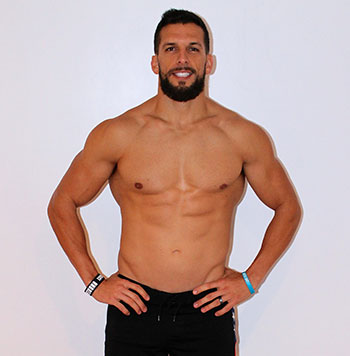You can’t swing your purse or raise your hand these days without hitting something or someone that is without the gluten. The gluten-free label has been stamped on as many products as possible and created a $4.2 billion industry almost over night. So what gives? Why all the hype? That’s what Fit2Fat2Fit Drew Manning, the trainer who gained a ton of weight just to lose it, is taking on in his newest “wellness” experiment.
He’s not alone in the “how did this happen” curiosity. Jimmy Kimmel recently did a spoof on the gluten-free fad, taking cameras to the streets to ask people if they are gluten free. If they said yes, he asked them to explain what gluten was…and not a single respondent knew. Frankly, we aren’t surprised.
We’re all avoiding this stuff like the plague, but nobody is exactly sure why.
Manning’s newest journey focuses on educating the American people that gluten-free does not always equal healthy. “People look at gluten-free as weight-loss diet food, and that’s not the case,” says Manning. “It’s a disease. When people have Celiac they can’t process that protein found in wheat and grains. It’s not for everyone.”
GlutenFreeFat2Fit.com will span four-months, a mere fraction of his previous year-long journey where he gained over 70 pounds then lost it again to learn what it was like to be one of his overweight clients. But the four-month gluten experiment is long enough to show the internal and medical effects of a gluten-free diet. Blood tests from his medical doctor including a lipid profile, hormone levels, and antibody counts to measure food sensitivities will be measured before, halfway through, and after the challenge.
Jennifer Lawrence Bashes Gwyneth Paltrow’s Gluten-Free “Eating Disorder”
This is how the rest of the year shapes up for Drew:
Phase I: Unhealthy Gluten-Free
For the first two months, he is eating exclusively gluten-free processed foods. “Anything that says ‘gluten-free’ is fair game. Some whole foods like fruits and vegetables, but I really wanted to simulate the traditional American diet with a gluten-free twist,” he said. This means cereals for breakfast, granola bars for snack, sandwiches, pasta, pizza and other things he would usually consider “cheat meals” from his typical whole-foods, clean-eating regimen.
How does he feel?
He is 3.5 weeks into this journey. So far his caloric intake has stayed the same, yet he has already gained 10 pounds and feels “sick and exhausted by the end of the day.” He anticipated the weight gain, but forgot about the mental and emotional effects of eating processed foods. “It’s exhausting!” he says.
Manning mentioned he is already feeling the affects during his workouts, too, moving a little bit slower than usual and getting tired faster.
Phase II: Healthy Gluten-Free
Phase II is the second two months, and will focus on re-education. “I’ll show people a better way to go gluten free,” he says. “You’ll see exactly what I eat every day, which will be basically whole foods plus recipes to guide people to a better lifestyle.” Manning hopes to educate and inspire his followers, empowering them as consumers to not buy into the current hype, whether that’s gluten-free, non-GMO, or all-natural just because it’s stamped on the package.
At the end of the day, processed is processed.
Is it for you?
Whether or not you believe going gluten-free is for everyone, “the real difference comes down to processed versus whole foods. Eating this way is for everybody,” says Manning.
Also Read:
5 Reasons Why Gluten-Free is Not for You

